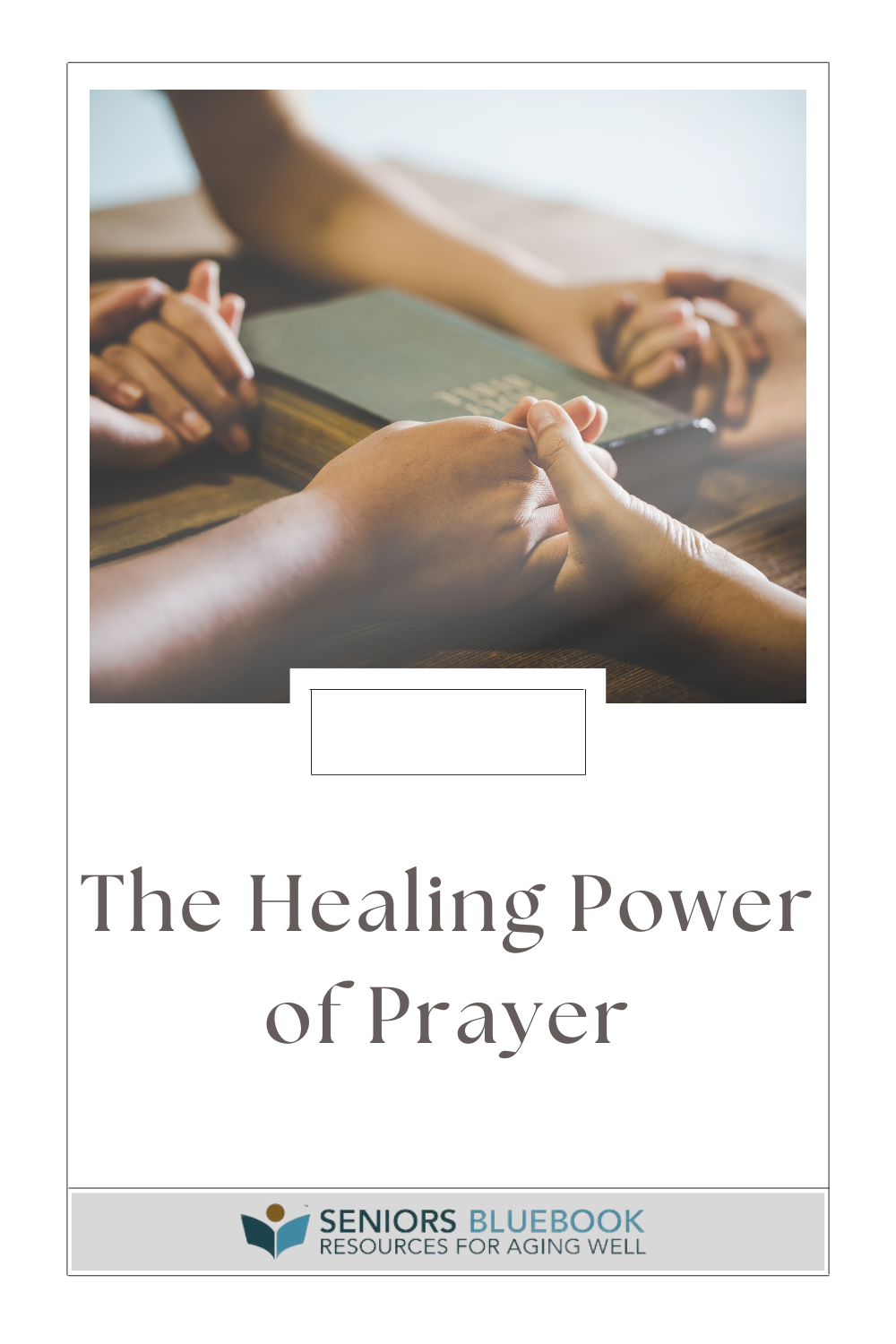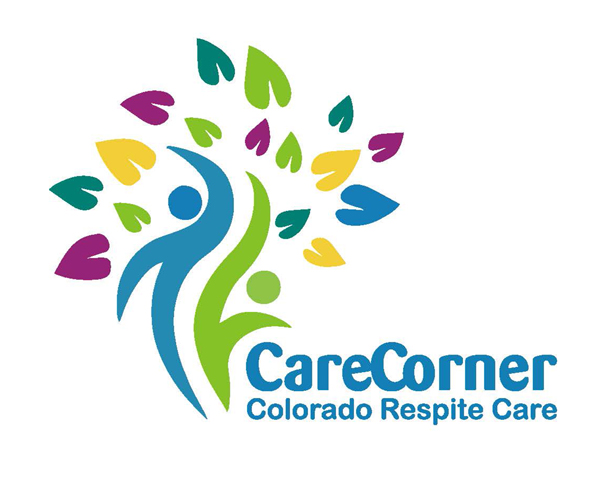The Healing Power of Prayer
CareCorner - SoCo
Feb 07, 2023
Colorado - Southern Colorado
Some years back, I had a professor who could turn almost any lecture about English into an antagonistic, argumentative upheaval about...God. It was never a “do you or don’t you believe” stance; oh no, in some ways, that would have been too easy. Shut the book. Discussion over.
He would begin the day’s lecture about Shakespeare’s Hamlet, for example, and end by sharing his personal and critical viewpoints on various religions; ultimately, narrowing his argument down by giving positive attributes to his prospective religion, citing that it was what was community-centered, and therefore, best.
Low-and-behold, it was during this course that I found a case study, showing the remarkably, improved results of hospitalized patients, who had fallen ill. It wasn’t a surgery that made them better. Or a slurry of medication, per se. It was simply the power of prayer.
I marched right up to professor before class had begun, case study in hand, excited to share my findings with him. He, on the other hand, seemed little to not-at-all impressed. He brushed it off with a mere, “Uh, huh,” slightly acknowledging me.
In the end, I was able to tie together the case study and the scene where Hamlet stumbled upon Claudius, making an argument for the power of prayer. If my memory serves me correctly, the class wasn’t a religious or Shakespearean class; it was some sort of rhetoric—the ability to speak! I got an A on the paper.
Little did I know then how much this topic would impact my future (not the rhetoric, well maybe), but the power of prayer when someone is facing an illness or death is impending.
It was during my years, working with patients and families who were facing serious illnesses that I would often reflect, thinking about the case study and wonder: ‘Has everyone read the case study?’ Every person I work with seems to have a magic heart, who knows when and where to be to help a patient and/or a family member out, offering everything from an ear to bend, a meal, to prayer. Volunteers appear, as if magically, in the middle of the night, to sit with, to pray with, a patient who might not have anyone else.
“There is a Chinese saying,” said Larry Dossey, M.D.: ‘A bird does not sing because it is looking for an answer; it sings because it has a song.’” Dr. Dossey, has written several books on the positive effects of prayer in hospitals. He is the former chief of staff at Humana Medical City Dallas. His definition of prayer is broad.
His studies have shown positive effects for those with whom prayer is given when faced with an illness. This can be especially positive if shared by someone with whom the person loves or is cared by. The study has even shown positive results when the hospitals go as far as to employ people to sit and pray with those individuals who are left to themselves.
Interestingly, while most people are only curious about the positive/negative effects impacting humans, the study proved the power of prayer is effective when observing it on plants, bacteria growth in petri dishes and tumor growth in animals.
I am constantly reminded of the words of one of my favorite social workers: “People need people.” Study or no study, my co-workers had long figured this out, and they were simply being people, when people needed people.
Gina (Paradiso) Cathcart is the director of Carecorner, Ltd., Colorado Respite Care. She is a healthcare educator, passionate about service to others and quality patient care. She can be reached at carecornerofcolorado@gmail.com.
Other Articles You May Like
Healthy Eating Tips for Older Adults: Nourishing Your Body at Every Age
As we age, our nutritional needs changebut the importance of eating well never does. A balanced, nutrient-rich diet can help older adults maintain energy, support brain function, strengthen bones, manage chronic conditions, and boost immunity. Healthy eating doesnt have to be complicated, its about making small, consistent choices that nourish the body and promote overall well-being.Here are some practical and easy-to-follow healthy eating tips tailored to older adults: 1. Focus on Nutrient-Dense FoodsAs metabolism slows with age, the body needs fewer calories but more nutrients. Prioritize foods that pack a nutritional punch without empty calories. Choose fruits and vegetables in a variety of colors for a range of vitamins and antioxidants. Opt for whole grains like oatmeal, brown rice, and whole-wheat bread for fiber and sustained energy. Include lean proteins such as chicken, turkey, eggs, beans, and fish. Add healthy fats from sources like avocados, nuts, olive oil, and fatty fishlike salmon. 2. Watch Portion SizesOlder adults often need fewer calories than they did in their younger years. Be mindful of portion sizes and aim to listen to your bodys hunger and fullness cues. Eating smaller, more frequent meals can also help manage appetite and blood sugar levels. 3. Stay HydratedDehydration is common in seniors because the sense of thirst often decreases with age. Make a habit of drinking water regularly throughout the day, even if you dont feel thirsty. Flavor water with fruit slices or herbs for variety. Limit caffeine and sugary drinks, which can dehydrate or add empty calories. Include hydrating foods like cucumbers, melons, and soups. 4. Prioritize Bone HealthAs bones naturally lose density over time, its important to consume enough calcium and vitamin D to maintain bone strength. Choose low-fat dairy products, fortified plant-based milk, leafy greens, and canned salmon with bones. Talk to your doctor about whether a vitamin D supplement is right for you, especially if you spend limited time in the sun. 5. Limit Added Sugar and SaltToo much sugar and sodium can increase the risk of heart disease, high blood pressure, and diabetes. Read food labels and aim for low-sodium and no-added-sugar options. Season meals with herbs, spices, or lemon juice instead of salt. Swap sweets for naturally sweet fruits like berries, apples, or grapes. 6. Eat Fiber-Rich FoodsFiber supports digestion, helps prevent constipation, and can lower cholesterol levels. Include beans, whole grains, fruits, vegetables, and nuts in your meals. Gradually increase fiber and drink plenty of fluids to help your body adjust. 7. Dont Skip MealsSkipping meals can lead to dips in blood sugar, fatigue, and overeating later in the day. Try to eat regular meals and snacks to maintain steady energy and avoid nutrient deficiencies. 8. Pay Attention to Dental HealthDental problems can make chewing difficult, which may lead to avoiding healthy foods. Choose softer, easy-to-chew options like: Cooked vegetables Soft fruits (bananas, applesauce) Ground or shredded meat Smoothies, soups, and stews If you wear dentures or experience mouth pain, talk to your dentist about comfortable food options. 9. Enjoy Your MealsEating should be a pleasant and social experience. Make mealtime enjoyable by: Sharing meals with family, friends, or neighbors Trying new recipes or healthy versions of favorite dishes Eating in a well-lit, calm environment At Avondale Care Group of Pennsylvania our services are fully customizable, allowing us to create a care plan that perfectly matches your personal routines and preferences.
Safe Summer Activities for Seniors
Summer can be one of the most joyful seasons for seniors, offering opportunities for movement, connection, and fun. By choosing the right activities and staying mindful of heat and hydration, older adults can enjoy everything the season has to offersafely and comfortably.Summer offers the perfect opportunity for seniors to enjoy the outdoors, soak up some vitamin D, and stay socially and physically active. However, rising temperatures and increased sun exposure can also bring unique risks, especially for older adults. With a bit of planning and awareness, seniors can make the most of the season while prioritizing safety and well-being.Here are some enjoyable and safe summer activities for seniors: 1. Morning or Evening WalksWalking is one of the best low-impact exercises for seniors. During the summer, its safest to walk early in the morning or later in the evening to avoid peak heat. Local parks, botanical gardens, or shaded trails offer refreshing scenery and a chance to connect with nature.Tip: Wear a hat, sunscreen, and breathable clothing, and bring water to stay hydrated. 2. GardeningGardening provides gentle physical activity and can be a therapeutic hobby. Whether its tending to flowers, vegetables, or herbs, it allows seniors to be outside while staying in control of their environment.Tip: Use raised garden beds to reduce strain on joints, and aim for shaded gardening times to avoid heat stress. 3. Outdoor PicnicsGathering with family or friends for a picnic is a great way to enjoy warm weather without exertion. Seniors can bring a comfortable chair and enjoy a meal, music, or a game of cards under a shaded tree or pavilion.Tip: Choose locations with accessible seating and restroom facilities. 4. Water Aerobics or SwimmingSwimming and water-based activities are ideal for seniors because theyre easy on the joints and help with mobility and flexibility. Many community centers offer senior-friendly aquatic programs in the summer.Tip: Always swim in supervised areas and wear water shoes to avoid slips and falls. 5. Outdoor Arts and CraftsFor those who love being creative, setting up a shaded table for painting, sketching, or crafting outdoors can be relaxing and inspiring. This combines artistic expression with the calming influence of nature.Tip: Use portable umbrellas or tents to create a cool, shaded workspace. 6. Farmers Markets and Outdoor FairsExploring a local farmers market is a pleasant way to get some light exercise while supporting local growers. Seniors can sample fresh produce, enjoy live music, and engage with their community.Tip: Go early in the day and use a rolling cart or bag to make carrying purchases easier. 7. Bird Watching or Nature ObservationBird watching can be both calming and mentally stimulating. A pair of binoculars and a local field guide can turn a simple outing into an enjoyable and educational experience.Tip: Choose a quiet, shady spot with seating and bring a journal to record observations. 8. Attend Outdoor Concerts or MoviesMany communities host free or low-cost concerts and movies in the park. These events offer great social opportunities and entertainment in a relaxed, outdoor setting.Tip: Bring a chair with good back support, a fan or mister, and snacks to stay comfortable. Safety Tips for Summer Fun Hydration is Key: Older adults may not feel thirsty as often, so its important to drink water regularly. Dress for the Weather: Light, loose-fitting clothes and a wide-brimmed hat help protect against heat. Use Sun Protection: Sunscreen with at least SPF 30 should be applied 20 minutes before going outside and reapplied every two hours. Know the Signs of Heat Exhaustion: Symptoms include dizziness, nausea, excessive sweating, and confusion. If any of these occur, seek shade and medical attention immediately.
Local Services By This Author
CareCorner Respite Care
Transportation , Pueblo, Colorado, 00000We provide in-home care and companionship to individuals who may be struggling from the complications of an illness, surgery, or injury, may be aging and/or declining in health, or a disabled adult.We are peoplecaringfor people.Woman owned and operated in South Colorado.CareProviders are in your area: Prowers, Kiowa, Baca, Bent, Otero, and Pueblo County.
CareCorner Respite Care
Pet Care & Services , Pueblo, Colorado, 00000We provide in-home care and companionship to individuals who may be struggling from the complications of an illness, surgery, or injury, may be aging and/or declining in health, or a disabled adult.We are peoplecaringfor people.Woman owned and operated in South Colorado.CareProviders are in your area: Prowers, Kiowa, Baca, Bent, Otero, and Pueblo County.
CareCorner Respite Care
Caregiver Support Services , Pueblo, Colorado, 00000We provide in-home care and companionship to individuals who may be struggling from the complications of an illness, surgery, or injury, may be aging and/or declining in health, or a disabled adult.We are peoplecaringfor people.Woman owned and operated in South Colorado.CareProviders are in your area: Prowers, Kiowa, Baca, Bent, Otero, and Pueblo County.

